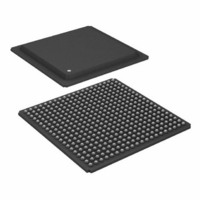ADSP-21160MKB-80 Analog Devices Inc, ADSP-21160MKB-80 Datasheet - Page 7

ADSP-21160MKB-80
Manufacturer Part Number
ADSP-21160MKB-80
Description
IC,DSP,32-BIT,CMOS,BGA,400PIN,PLASTIC
Manufacturer
Analog Devices Inc
Series
SHARC®r
Type
Floating Pointr
Datasheet
1.ADSP-21160MKBZ-80.pdf
(52 pages)
Specifications of ADSP-21160MKB-80
Rohs Compliant
NO
Rohs Status
RoHS non-compliant
Interface
Host Interface, Link Port, Serial Port
Clock Rate
80MHz
Non-volatile Memory
External
On-chip Ram
512kB
Voltage - I/o
3.30V
Voltage - Core
2.50V
Operating Temperature
0°C ~ 85°C
Mounting Type
Surface Mount
Package / Case
400-BGA
Lead Free Status / RoHS Status
Available stocks
Company
Part Number
Manufacturer
Quantity
Price
Company:
Part Number:
ADSP-21160MKB-80
Manufacturer:
AD
Quantity:
1 831
Company:
Part Number:
ADSP-21160MKB-80
Manufacturer:
Analog Devices Inc
Quantity:
10 000
Figure 5. Analog Power (AV
Development Tools
The ADSP-21160M is supported with a complete set of
software and hardware development tools, including Analog
Devices’ emulators and VisualDSP++
ronment. The same emulator hardware that supports other
ADSP-2116x DSPs, also fully emulates the
ADSP-21160M.
The VisualDSP++ project management environment lets
programmers develop and debug an application. This envi-
ronment includes an easy-to-use assembler that is based on
an algebraic syntax; an archiver (librarian/library builder),
a linker, a loader, a cycle-accurate instruction-level simula-
tor, a C/C++ compiler, and a C/C++ run-time library that
includes DSP and mathematical functions. Two key points
for these tools are:
• Compiled ADSP-2116x C/C++ code efficiency—the
• ADSP-2106x family code compatibility—The assembler
Debugging both C/C++ and assembly programs with the
VisualDSP++ debugger, programmers can:
• View mixed C/C++ and assembly code (interleaved
• Insert break points
• Set conditional breakpoints on registers, memory, and
• Trace instruction execution
• Perform linear or statistical profiling of program
• Fill, dump, and graphically plot the contents of memory
• Source level debugging
• Create custom debugger windows
The VisualDSP++ IDE lets programmers define and
manage DSP software development. Its dialog boxes and
property pages let programmers configure and manage all
1
REV. 0
VisualDSP++ is a registered trademark of Analog Devices, Inc.
compiler has been developed for efficient translation of
C/C++ code to ADSP-2116x assembly. The DSP has
architectural features that improve the efficiency of
compiled C/C++ code.
has legacy features to ease the conversion of existing
ADSP-2106x applications to the ADSP-2116x.
source and object information)
stacks
execution
9
'',17
)
DD
) Filter Circuit
$*1'
1
development envi-
)
$9
''
–7–
of the ADSP-2116x development tools, including the syntax
highlighting in the VisualDSP++ editor. This capability
permits:
• Control how the development tools process inputs and
• Maintain a one-to-one correspondence with the tool’s
Analog Devices’ DSP emulators use the IEEE 1149.1 JTAG
test access port of the ADSP-21160M processor to monitor
and control the target board processor during emulation.
The emulator provides full-speed emulation, allowing
inspection and modification of memory, registers, and
processor stacks. Nonintrusive in-circuit emulation is
assured by the use of the processor’s JTAG interface—the
emulator does not affect target system loading or timing.
In addition to the software and hardware development tools
available from Analog Devices, third parties provide a wide
range of tools supporting the ADSP-2116x processor
family. Hardware tools include ADSP-2116x PC plug-in
cards. Third Party software tools include DSP libraries,
real-time operating systems, and block diagram
design tools.
Designing an Emulator-Compatible DSP Board
(Target)
The White Mountain DSP (Product Line of Analog
Devices, Inc.) family of emulators are tools that every DSP
developer needs to test and debug hardware and software
systems. Analog Devices has supplied an IEEE 1149.1
JTAG Test Access Port (TAP) on each JTAG DSP. The
emulator uses the TAP to access the internal features of the
DSP, allowing the developer to load code, set breakpoints,
observe variables, observe memory, and examine registers.
The DSP must be halted to send data and commands, but
once an operation has been completed by the emulator, the
DSP system is set running at full speed with no impact on
system timing.
To use these emulators, the target’s design must include the
interface between an Analog Devices’ JTAG DSP and the
emulation header on a custom DSP target board.
Target Board Header
The emulator interface to an Analog Devices’ JTAG DSP
is a 14-pin header, as shown in
supply this header on the target board in order to commu-
nicate with the emulator. The interface consists of a
standard dual row 0.025" square post header, set on
0.1"
Pin 3 is the key position used to prevent the pod from being
inserted backwards. This pin must be clipped on the
target board.
generate outputs.
command line switches.
0.1" spacing, with a minimum post length of 0.235".
Figure
ADSP-21160M
6. The customer must













